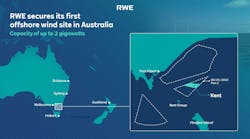Offshore staff
OSLO, Norway – Rystad Energy predicts that development wells in Australia facing P&A will rise from the current 160 to more than 440 by 2026, supplemented by a further 172 offshore exploration wells.
The value of the country’s decommissioning sector could exceed $40 billion (including non-producing onshore assets), the consultant added. And that projected total could even double, depending on how many decommissioning projects materialize.
Jimmy Zeng, senior analyst at Rystad Energy’s upstream team, said: “Recent developments have made it more difficult for operators to sidestep decommissioning obligations by selling aging assets, as the market appetite for such assets is drying up.
“Many producers will have to deal with the issue in coming years, with ExxonMobil having the lion’s share of liabilities in Australia.”
Rystad’s analysis of the P&A outlook is based on the production status of each operator’s offshore wells; producing fields ceasing operations in the next five years; wells already suspended but not yet abandoned; and partially abandoned wells.
Prior to 2015 an estimated 890 offshore wells were drilled in Australia, of which 108 have been permanently abandoned.
Of the 782 wells not yet abandoned, 440 are near-term P&A candidates, most located in the Gippsland basin offshore southeast Australia.
Here ExxonMobil and BHP’s Gippsland Basin Joint Venture is the dominant developer. The area has supplied gas since 1964, but output is set to enter long-term decline over the next decade.
Most of the wells are on fixed platform facilities.
In the North Carnarvon basin offshore Western Australia, Rystad’s analysis shows that non-producing wells are relatively ‘younger’ than those in the Gippsland, most being no more than 20 years old.
ExxonMobil is facing a steep increase in wells likely to cease production over the next five years. Although most are platform-based, with abandonment costs much lower than for subsea wells, regulatory pressure on the company to decommission these wells has increased lately, Rystad said.
Other Australian operators Santos, Woodside, BHP and Vermillion Energy also face growing decommissioning obligations in the next five years.
Woodside and BHP have more subsea wells to take care of. Recently Woodside advised it would start P&A of up to 18 subsea wells on the Enfield field from 2022 to 2024.
06/09/2021





